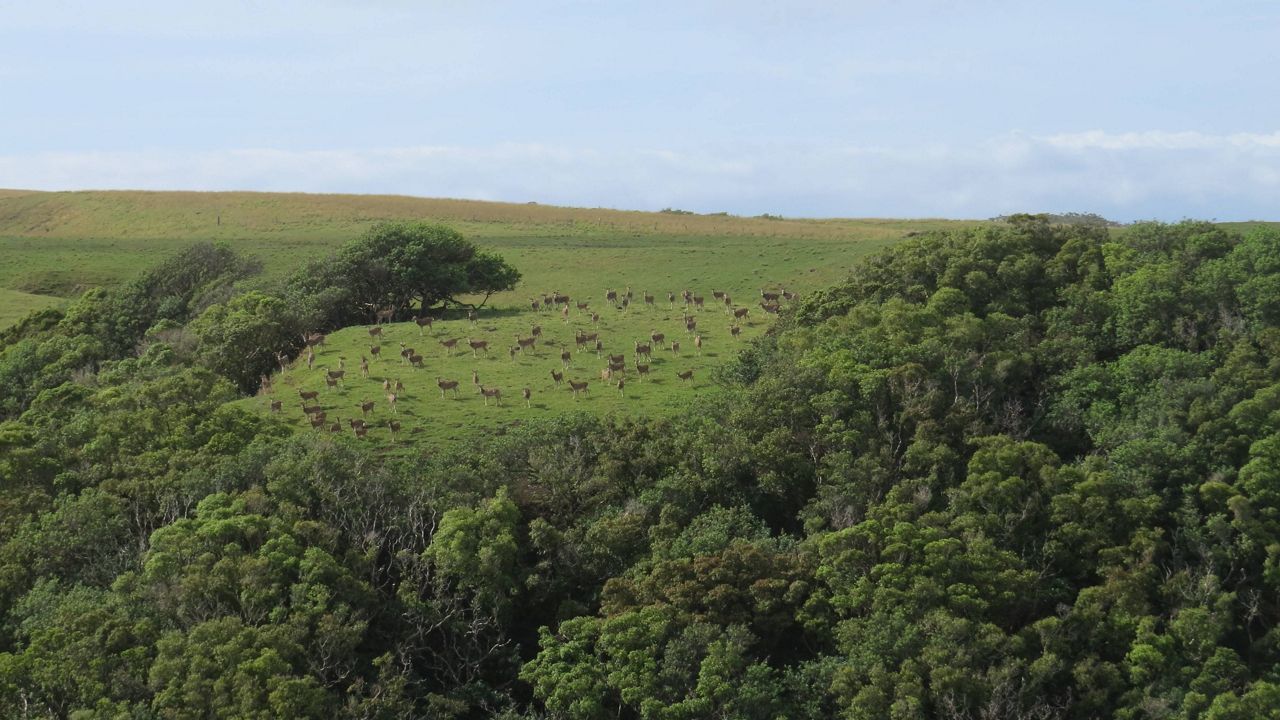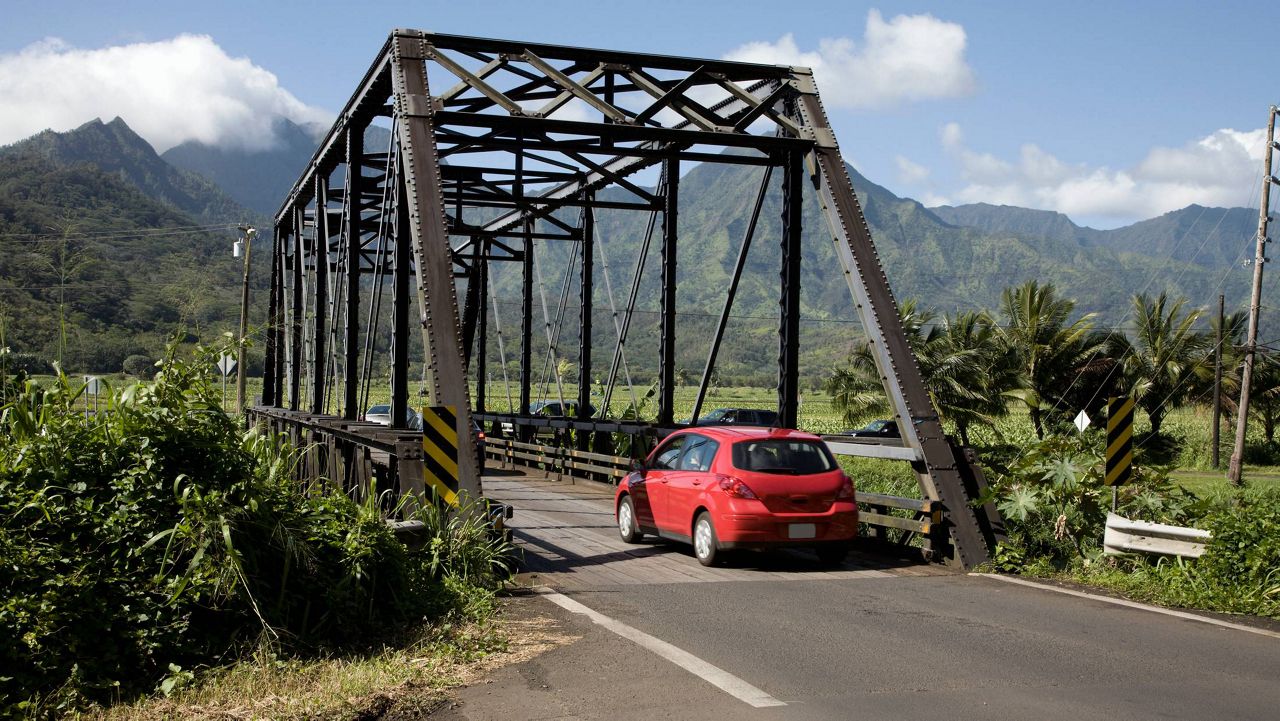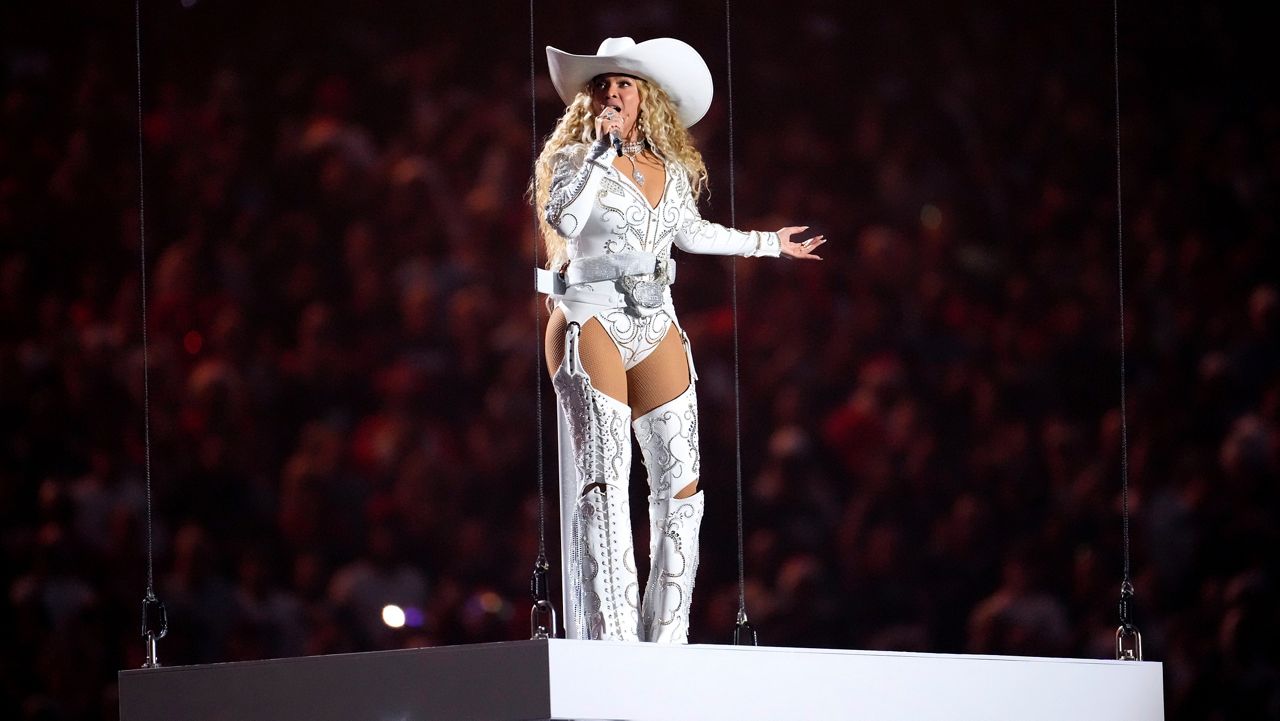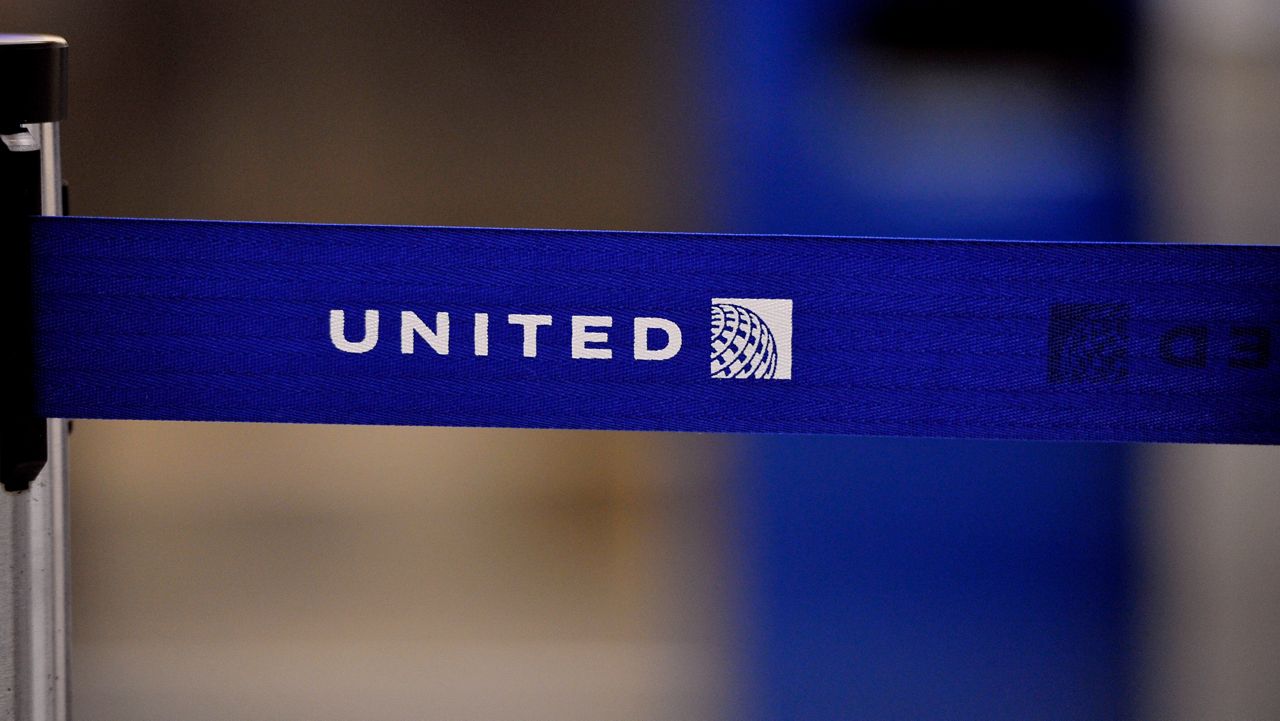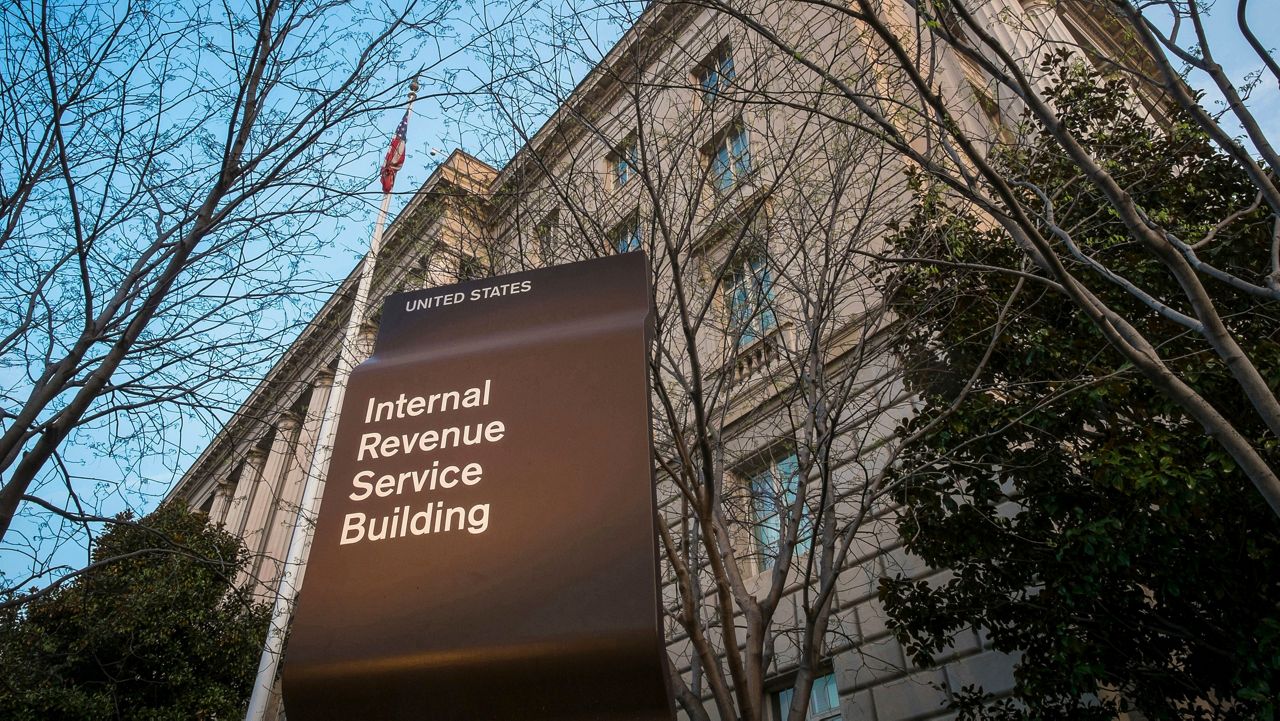MAUI COUNTY, Hawaii — On Maui and Molokai, state officials are fencing in forests and encouraging hunters to take doe in order to reduce the population of axis deer, which have exploded in recent years. The deer are spreading invasive plants and stripping forests of vegetation across the islands, leading to increases in runoff that is harmful for nearshore reefs.
Maui and Molokai are being devastated by an overpopulation of axis deer as the invasive animals move into high-elevation forested land, eating everything. The islands’ forests are crucial as they capture rain water and replenish the islands’ aquifers. In many areas at lower elevations, the deer have already turned once-lush landscapes into barren wastelands.
Axis deer, which originally come from India, were first introduced to Molokai in 1868 as a gift to King Kamehameha V. Populations were established for hunting on Lanai in 1920 and Maui in 1959.
“The deer will rub their horns on trees and kill the bark in the lower areas, and it's really striking when you're walking around,” said Jeff Bagshaw, the Communications and Outreach Specialist for the Division of Forestry and Wildlife Maui Nui Branch, to Spectrum News Hawaii on Friday. “In unfenced areas, everything that is green below the reach of a deer’s head is bare. It’s just bare; the ground; the branches; there’s no shrubbery.”
Walter Ritte, a Native Hawaiian activist and Molokai resident, described to Spectrum News Hawaii in an interview on Friday how beginning in 2020 axis deer started entering residents' yards in search of more food sources. The deer were also seen eating grass along the highway.
“It was the first time that people saw so much deer,” said Ritte. “People started hitting them with their cars.”
Ritte said the deer quickly denuded the vegetation on Molokai. Around the airport, every tree is barren as the greenery has been devoured by deer, according to the Department of Land and Natural Resources.
“There used to be a huge forest on these lands and the forest is gone. It's just getting worse and worse and worse,” said Ritte. “The deer population now is garnering the kinds of concerns that we’re hoping for people to see this is a huge problem on Molokai.”
On West Molokai, James Espaniola, a Forestry and Wildlife Technician with the DLNR Division of Forestry and Wildlife, talks about footage captured while on a helicopter ride of herds of deers. (Courtesy Hawaii DLNR)
During heavy rain events, the loss of vegetation is causing problems since forests help collect water and without the forest’s understory there is runoff, which goes into the ocean and nearshore reefs. After major rain events in December, the ocean surrounding Molokai was brown.
Ritte noted that there has been runoff around Molokai for decades, due to what he considers bad practices from Molokai Ranch, which owns 55,000 acres of land — a third of the island. Still, he said the situation has been exacerbated in the last two years by deer.
“Year after year, it causes more and more land to be flowing into the ocean,” said Ritte. “We're really ruining our ability to get protein on the land and at the same time ruining our ability to get protein from the ocean because of the erosion problem that it's causing.”
Ritte said many Molokai residents hunt deer and fish for subsistence. He described deer as a great protein source, which has little fat on it.
He said because so many of the deer are on private lands it makes it difficult for hunters to access the deer. Currently, Molokai Ranch is owned by a Singapore company, which is selling it for $260 million. Ritte said he hopes that the next landowner will be someone who cares about conservation, comes up with a management plan and talks directly with the community.
Much of Hawaii’s lands are privately owned — DLNR’s land only accounts for about 25% of the state’s lands. Bagshaw, who is with the Division of Forestry and Wildlife Maui Nui Branch, said officials are trying to think of ways to encourage more private landowners to allow for hunting on their properties, such as changing liability laws.
Hunting is an effective way to reduce the population of deer. Annually, hunters kill more than 7,000 axis deer.
The Division of Forestry and Wildlife, which manages the hunting permits for Maui County, is encouraging people to cull doe out of the herds — instead of focusing on trophy bucks.
A recent study published in University Press' Pacific Science journal estimates that there are more than 10,000 deer on Maui. The study said that 70% of the deer population is female — even though their natural ratio of genders at birth is 1:1. The study says that annually four females would need to be killed for every one male with an overall reduction of 20-30% of the population in order to create a stable population, since the deer can increase their population by as much as 20-30% each year.
“They’re just baby making machines,” said Bagshaw. “They're really biologically engineered to be in a habitat with lots of natural predators. Human predators just can't keep up.”
Maui and Molokai residents hunt deer to eat, but tourists and others also take them as trophies.
“I've had two hunters who've privately told me … ‘we should all take more does, but when you're out there, the temptation is really to take the buck, so you've got the rack,’” Bagshaw said, referencing the antlers that are often kept as prizes.
Bagshaw also said hunters have told him that they don’t take does when they’re with fawns.
“The natural inclination of a hunter is to move on to the next animal,” Bagshaw said. “By our own human nature, by our own habits, we have exacerbated the problem.”
He said he hoped that hunters would help by taking does over bucks, emphasizing that the government can’t solve the deer overpopulation problem without the help of hunters.
Fencing is also an effective way to protect Maui and Molokai’s forests, according to Bagshaw. Currently, DLNR is focused on raising the height of many existing fences. In Maui County, 111,000 acres of forests are already fenced, but these fences are many decades old and only four feet high as they were built to keep pigs and goats out. Unfortunately, the deer can jump over these fences, so DLNR is extending many of them to be eight feet tall.
Bagshaw said that in the past. deer have preferred open areas — like pastures — over wooded areas. However, now that the deer population has increased, they are seeking out more food sources and have started to also invade the forests.
“We're building fences as fast as we can, but in the meantime, the deer are doing what they do as fast as they can," said Bagshaw.
Maui County has fenced in 17% of the islands’ forests in order to protect their watersheds, but the goal is to fence in 30% by 2030. For now, Bagshaw said they are focused on the areas that are most important — because they are habitats for endangered species or important watersheds — and most in danger of infiltration by deer.





